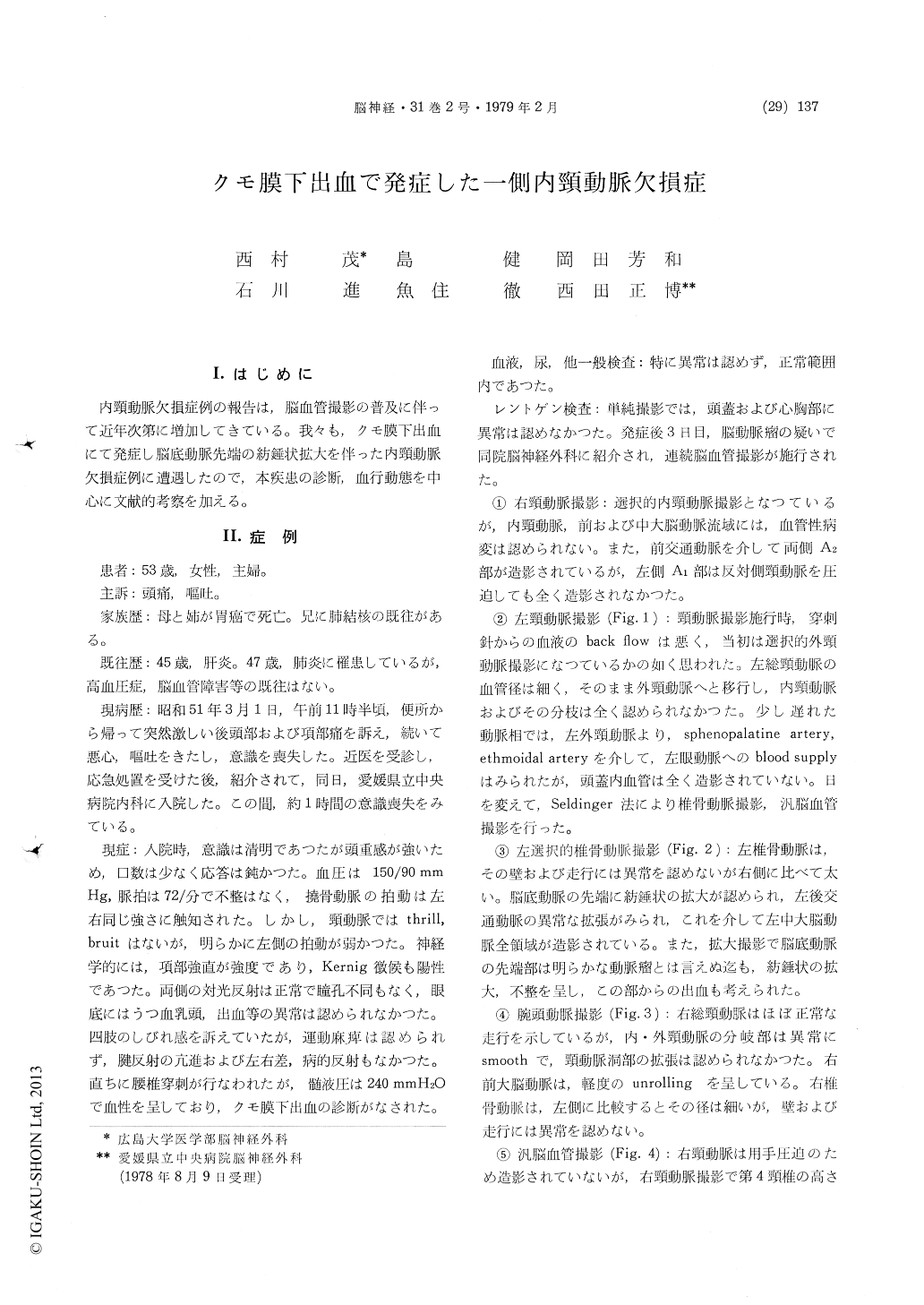Japanese
English
- 有料閲覧
- Abstract 文献概要
- 1ページ目 Look Inside
I.はじめに
内頸動脈欠損症例の報告は,脳血管撮影の普及に伴って近年次第に増加してきている。我々も,クモ膜下出血にて発症し脳底動脈先端の紡錘状拡大を伴った内頸動脈欠損症例に遭遇したので,本疾患の診断,血行動態を中心に文献的考察を加える。
A 53-year-old housewife was admitted to the Ehime Prefectural Hospital 4 hours after the initial onset of severe headache, vomiting and loss of consciousness on March 23, 1976. On neurological examination, consciousness was almost clear. She demonstrated nuchal rigidity, Kernig's sign, di-minished pulsation of the left carotid artery withoutthrill, but no localizing sign. The cerebrospinal fluid was bloody under increased pressure. Carotid angiography on the right revealed that the left anterior cerebral artery was filled from the right side through the anterior communicating artery, but there was no abnormal finding. On left-sided carotid angiogram, neither the left internal carotid artery nor the intracranial arteries were visualized. The left ophthalmic artery was opacified from the external carotid artery via the sphenopalatine artery. Retrograde brachial angiography on the left showed the dilated left vertebral artery filled not only the vertebrobasilar system but also the ipsilateral middle cerebral artery through the dilated posterior communicating artery. Fusiform dilatation of both the proximal and the distal portion of the basilar artery was also recognized and the latter was supposed to be the site of origin of sub-arachnoid hemorrhage. Arch aortography demon-strated that the left carotid artery had no bifurcation and changed directly to the external carotid artery. No remnant of the internal carotid artery wasfound. On right-sided carotid and vertebral angio-gram, the common carotid artery bifurcated at the level of the fourth cervical vertebra and its proximal portion showed no dilatation corresponding to the carotid sinus. No stenotic or obstructive lesion was found in both the extracranial and the intracranial arteries on these angiograms.
Pattern of the circle of Willis in this case belongs to the first group of Tsuruta's classification of cerebral circulation in the case of unilateral absence of the internal carotid artery.
A number of cases of agenesis of the internal carotid artery are reported to be combined with intracranial aneurysms in the literature. The ab-normality in hemodynamics at the level of the circle of Willis, which is caused by absence of the internal carotid artery, may contribute to develop-ment of intracranial aneurysm and of such fusiform dilatation of the basilar artery as in the present case.

Copyright © 1979, Igaku-Shoin Ltd. All rights reserved.


